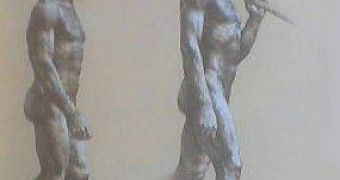As soon as they entered Europe, Homo sapiens interbred with the Neanderthals. At least this is what a 33,000 years old human skull found in a Romanian cave (filled also with fossils of cave bear) in 1942 suggests. This Homo sapiens skull displays a trait specific to Neanderthals, and a new research shows it as further proof of interbreeding between the two species.
"The otherwise human skull has a groove at the base of the back of the skull, just above the neck muscle, that is ubiquitous in Neandertal specimens but has never been seen in the remains of a modern human," explained lead researcher Erik Trinkaus, an anthropologist at Washington University in St. Louis, Missouri. "I was frankly quite surprised to see it when I was looking at the specimen. My first reaction was, that shouldn't be there."
His team shows that this finding is backed up by other fossils discovered in France, Romania, and the Czech Republic, which bear "archaic" or odd traits pointing to interbreeding. Humans and Neanderthals are known to have co-existed in Europe for several thousands years after the arrival of modern humans about 35,000 years ago.
But how the two species interacted is still an enigma: did Homo sapiens simply kill off or outcompete the Neanderthals to extinction. Or were the Neanderthals just absorbed into the gene pool of Homo sapiens?
Recent DNA analysis discarded this theory, even if humans and Neanderthals were found to share some 99.5 % of their genes. The DNA research clearly showed that the two species split off from a common ancestor some 400,000 years ago. But this team points to the fossil of the early humans who first got out of Africa to populate the rest of the continents.
"Neanderthal features like the skull groove were either not present among those populations or were so rare that they've not yet been found. So when we find them in early modern humans in places like Europe, it's a probability statement-either they were very rare in ancestral humans but popped up in these humans or they were something acquired through some small level of admixing with Neanderthals," said Trinkaus.
"We have enough of them now that with each trait the probability of it being just something we haven't seen yet in the early Africans becomes less and less. Some interbreeding shouldn't be surprising, because of the sparse populations of humans and Neanderthals in ancient Europe. As for sex in the Pleistocene (Ice Age) ... I expect they had it. Neither humans nor Neanderthals had a lot of mate choice and, well, that's what happens in the real world. People do what people do."
Others warn that the groove characteristic on the early European Homo sapiens might not be the same with those encountered in Neanderthals. "It may simply be a type of unusual feature expected in a variable human population like the group that colonized Europe. If you look at a thousand modern humans, you can often find one or two that have a bump here, or a groove or depression there. That doesn't make them Neanderthals or prove that there was a Neanderthal in their ancestry some 30,000 years ago." said Eric Delson, a paleoanthropologist at Lehman College in the Bronx, New York.
But this does not discard the interbreeding theory. "[Individuals] may cross species boundaries in mating, and [in this case] we are defining the two different species by morphology-these are [all] people. People might see each other, for whatever reason, as potential mates. But the genetic evidence is not in favor of hybridization, and this fossil does not convince me, nor do the several from Central Europe. I am still waiting for a 'smoking gun,' or perhaps in this case 'a bleeding hand ax.'" added Delson.

 14 DAY TRIAL //
14 DAY TRIAL //